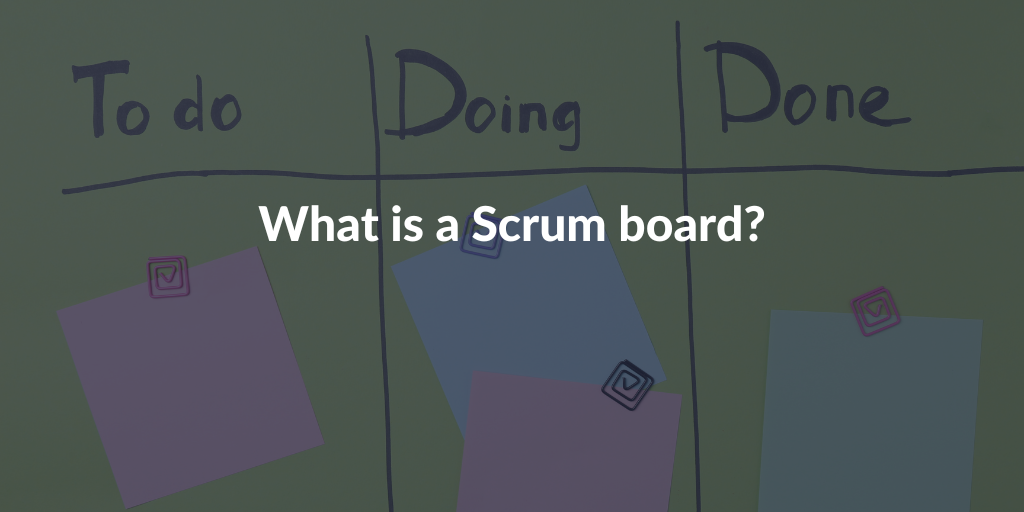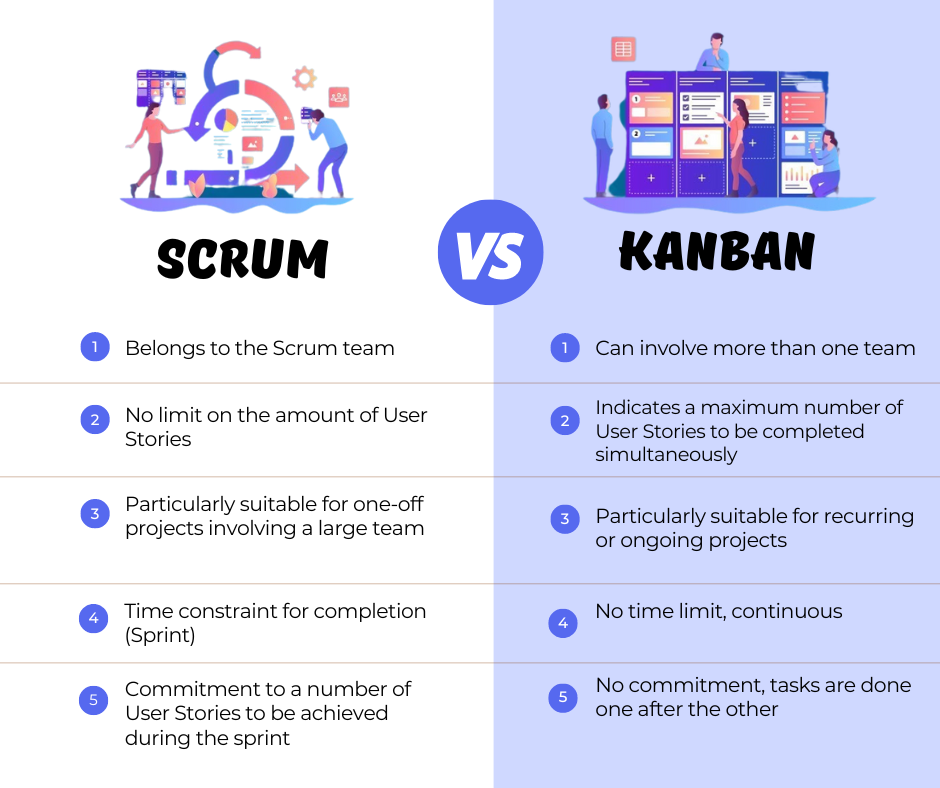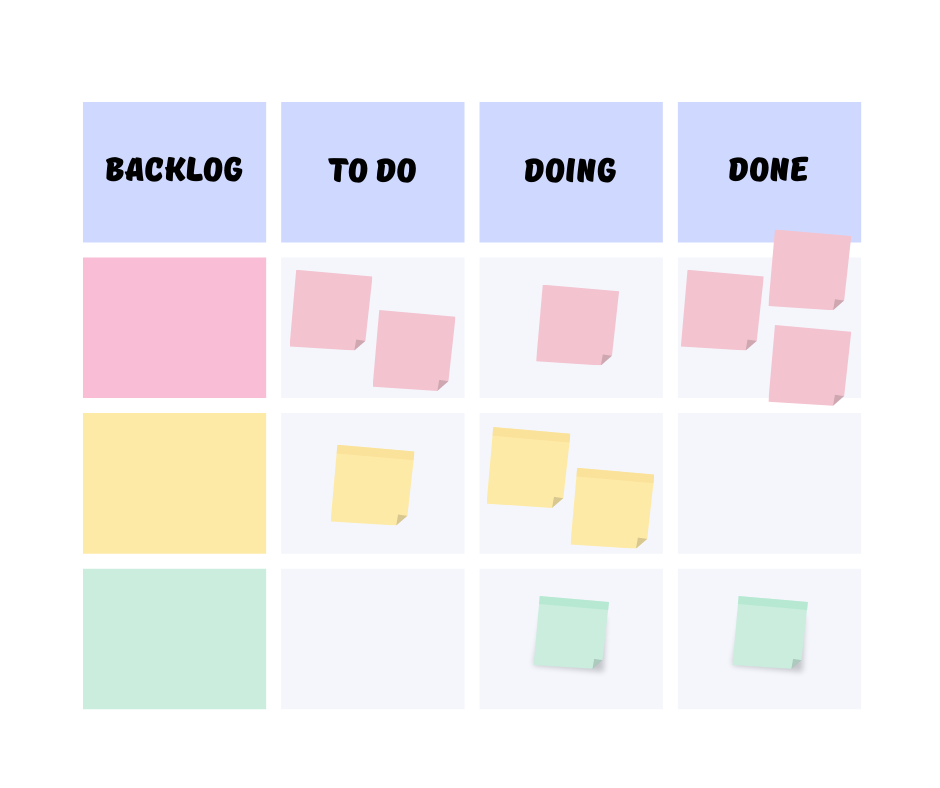Why you should use a Scrum board
To provide the necessary transparency
The Scrum board is visible and accessible to everyone. It allows the team to know clearly who is doing what, where the tasks are and thus avoid any confusion.
To facilitate the daily Scrum
The daily Scrum, the daily meeting of the development team, usually takes place in front of the Scrum board, standing up and taking no more than 15 minutes. In this way, each participant can easily identify the tasks on which his colleagues are working and their status. This can be the time to move a post-it note that you are responsible for, although this can be done at any time, as soon as the status of the user story needs to be changed.
To identify delays or roadblocks
Any delays in development can thus be easily detected. At a glance, it is possible to get an overview of the sprint and to spot user stories that seem to stagnate or linger in the wrong column. Once the problem has been identified, it is possible to solve it.
To respect the objective of a sprint
All the post-its in the left-hand column must be in the right-hand column at the end of the sprint. Thus, with the help of the Scrum board, the team ensures that the objective of each sprint is met.
To facilitate the sprint retrospective
The Scrum board is very useful to the Scrum Master during the sprint retrospective as it provides immediate feedback on the status of the project.
The advantages of a Scrum board
The Scrum board has many advantages and allows:
- To communicate clearly and transparently
- To know at a glance where the sprint is at and therefore to maximise visibility
- Newcomers to quickly integrate the project and easily understand the process
- To facilitate and encourage conversation and interaction
- Team members to stay focused on their work and avoid wasting time
- To facilitate teamwork and support the commitment of each team member
How to use a Scrum board?
When determining how to use a Scrum board, the first thing to remember is that there is no specific way to use it. You can customize your Scrum board to suit your needs.
Defining the categories
The Scrum board is divided into at least three parts: tasks to do, tasks in progress and completed tasks. For an even more detailed management of tasks, it is possible to add an additional column with for example :
- Test
- Problems
- Change requests
In their dedicated video, Constantin Guay and Jean-Pierre Lambert recommend a simple table with 4 columns:
- User stories (one per line)
- Tasks to be done
- Tasks in progress
- Completed tasks










